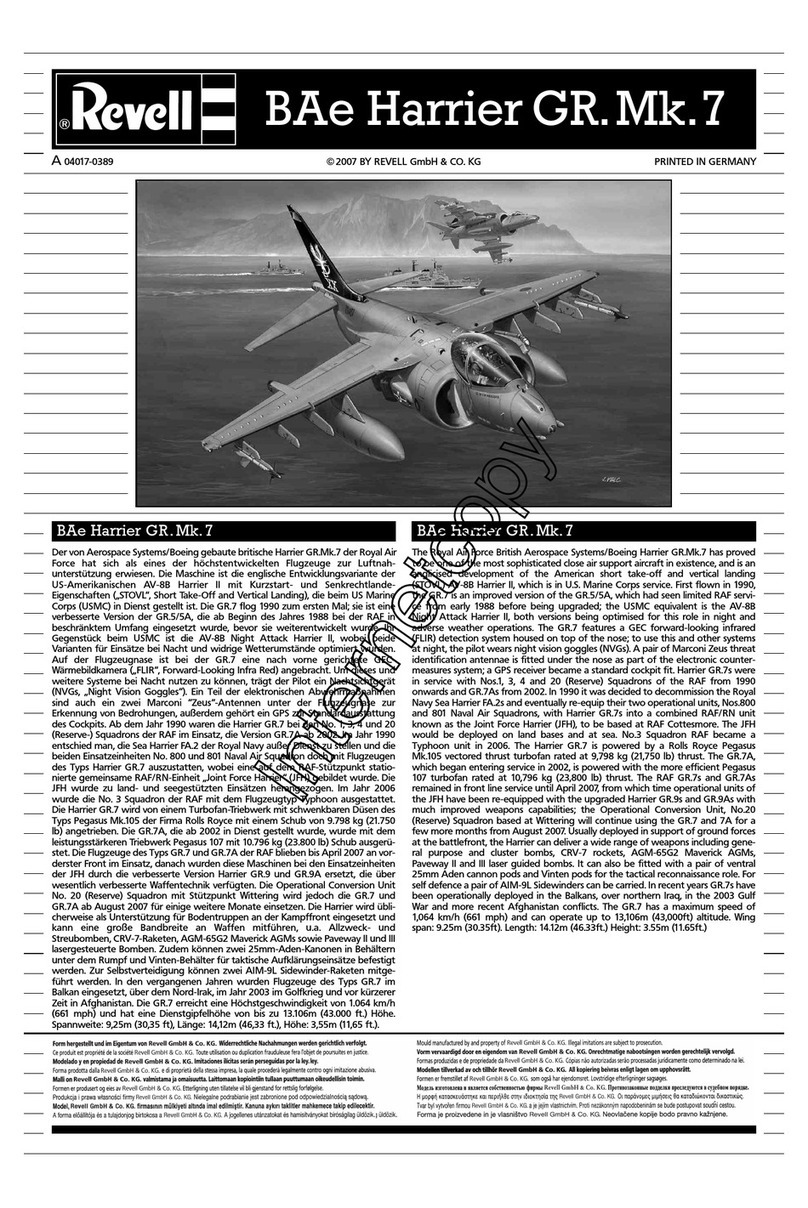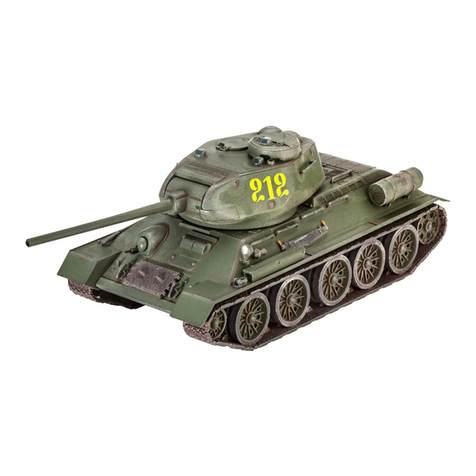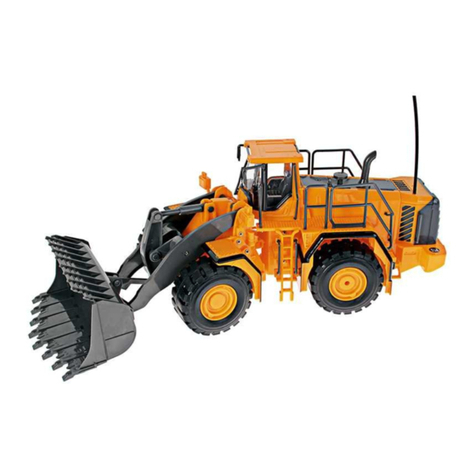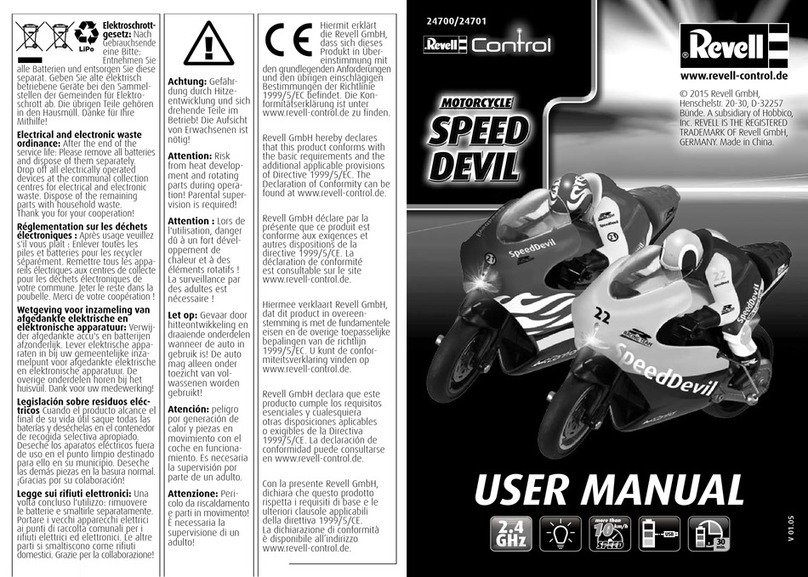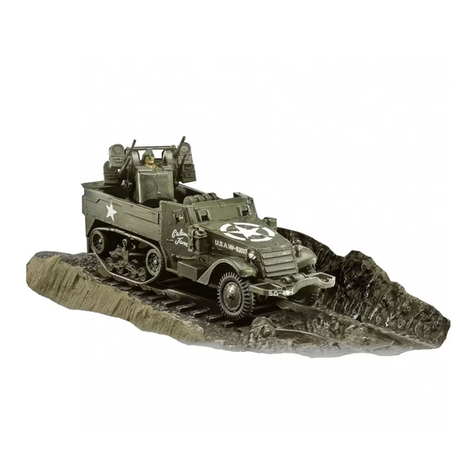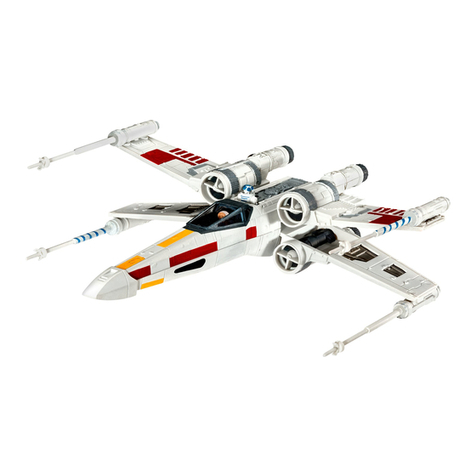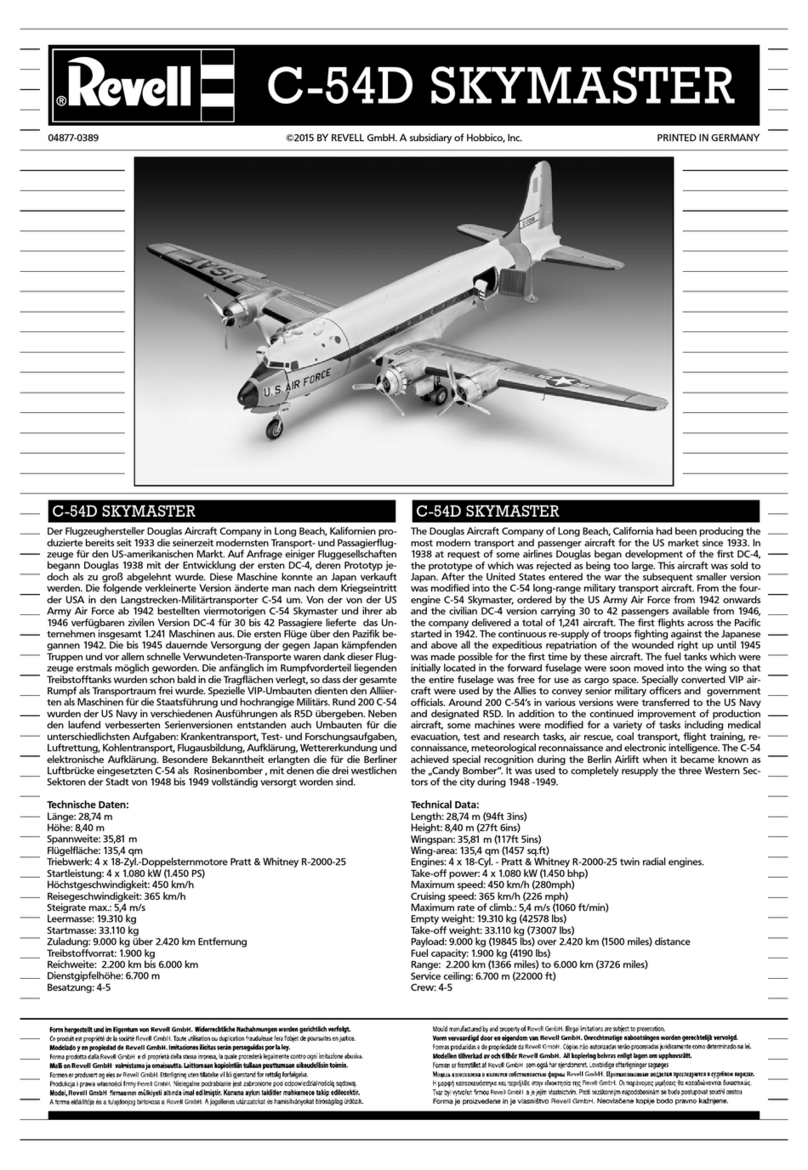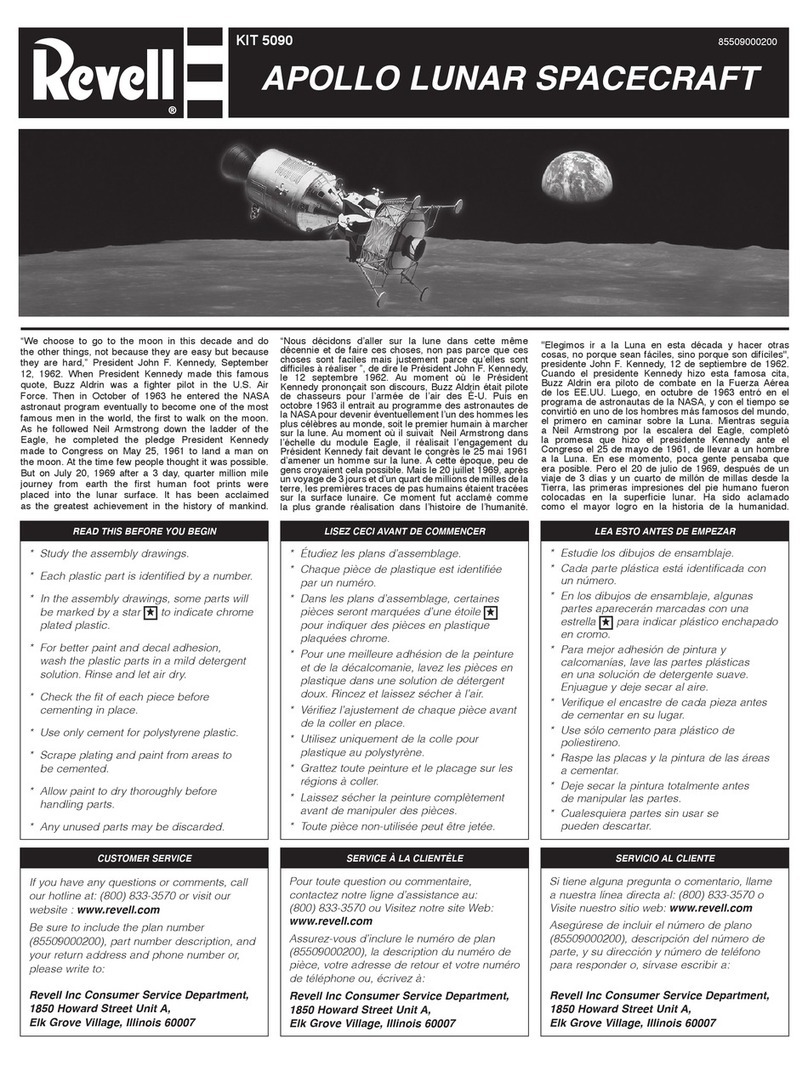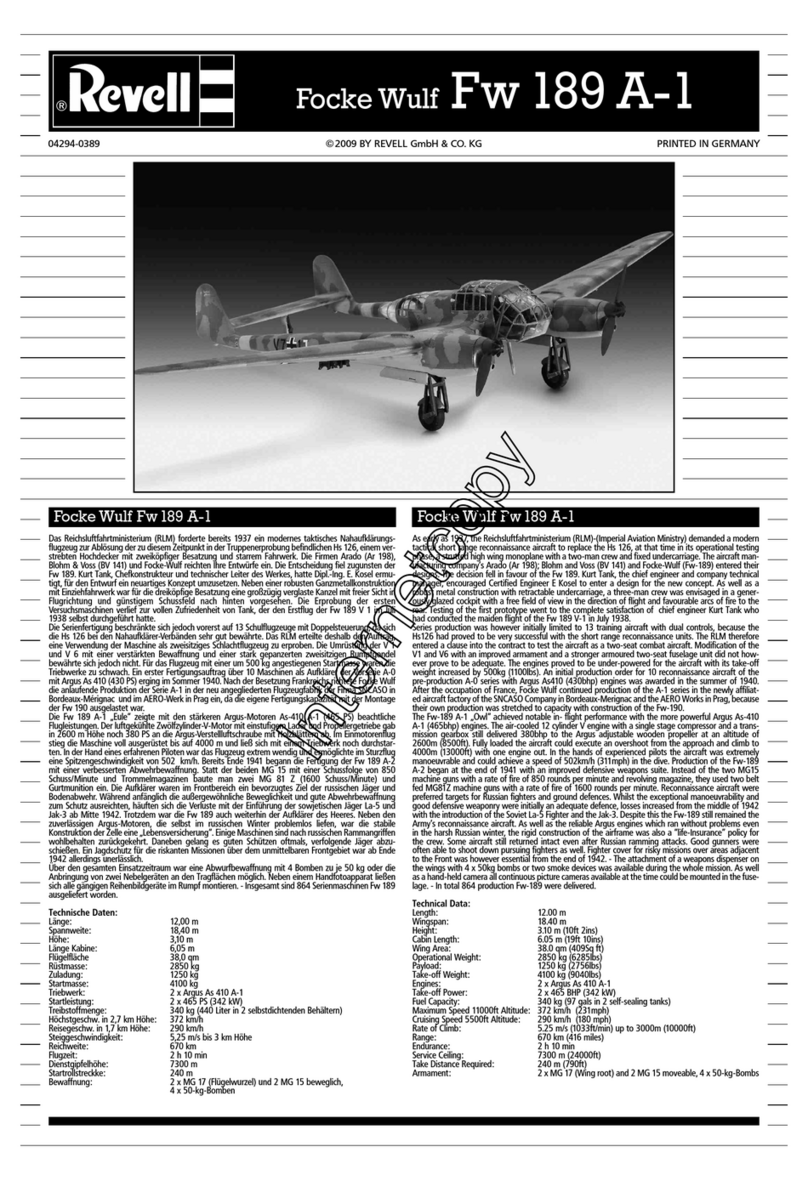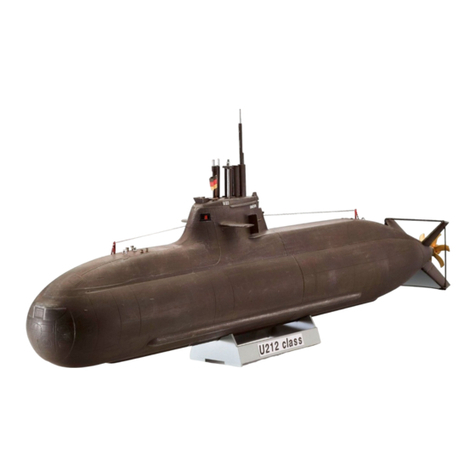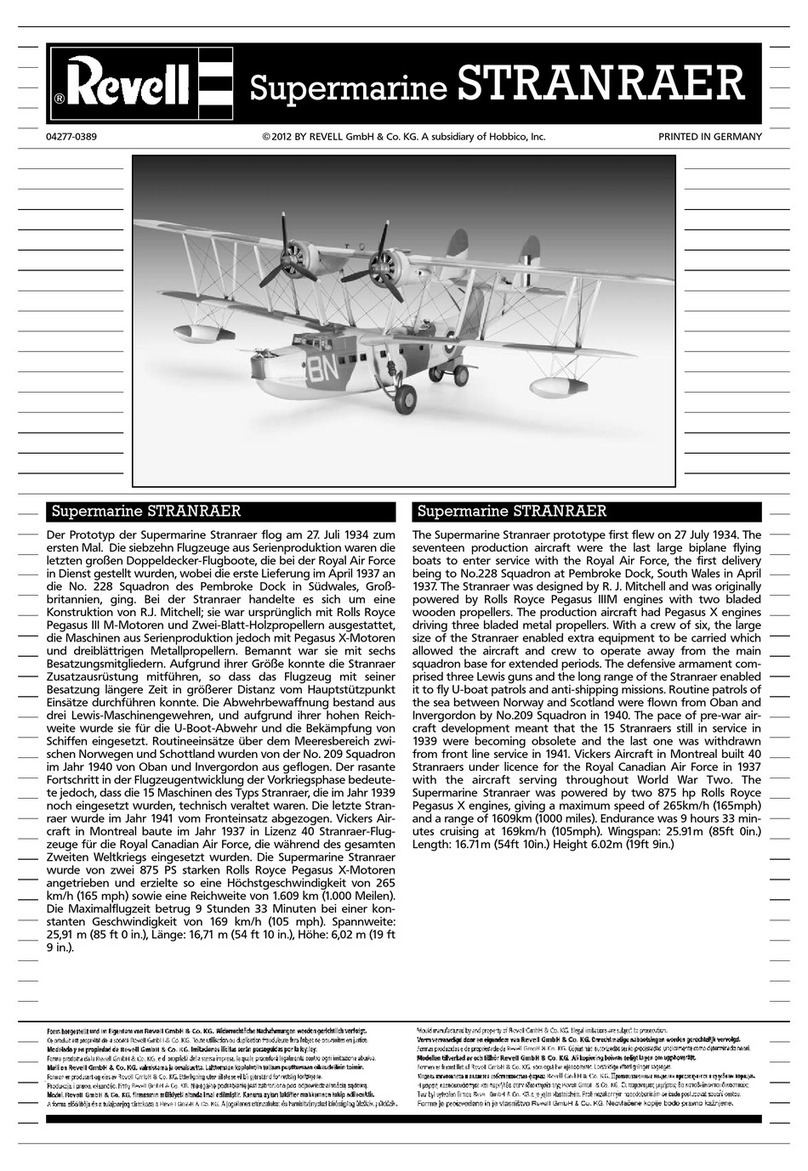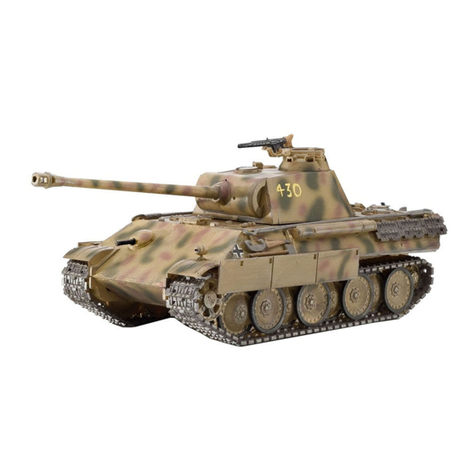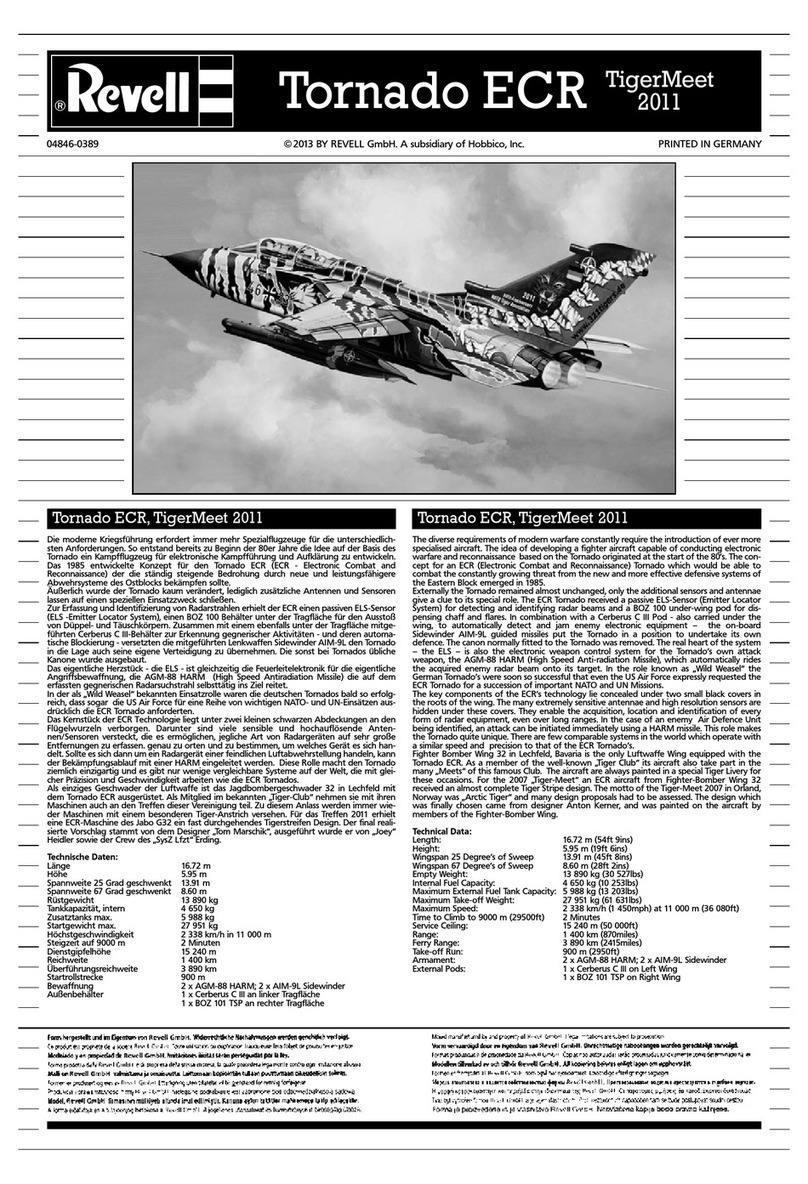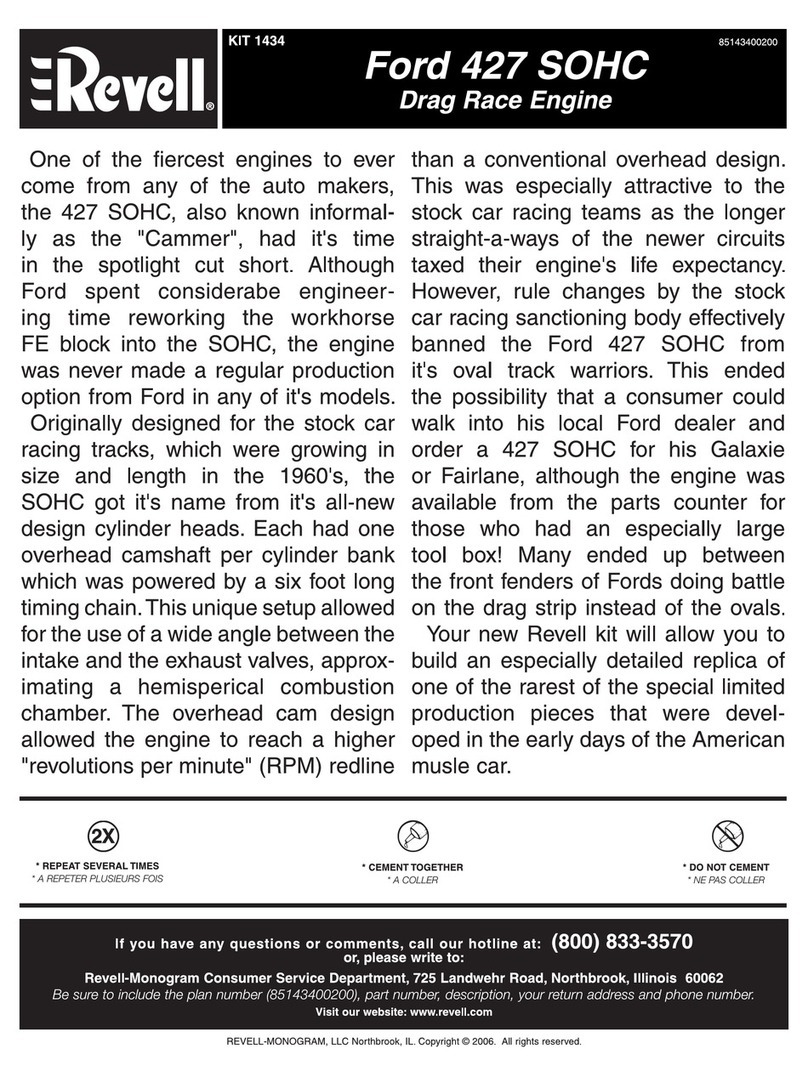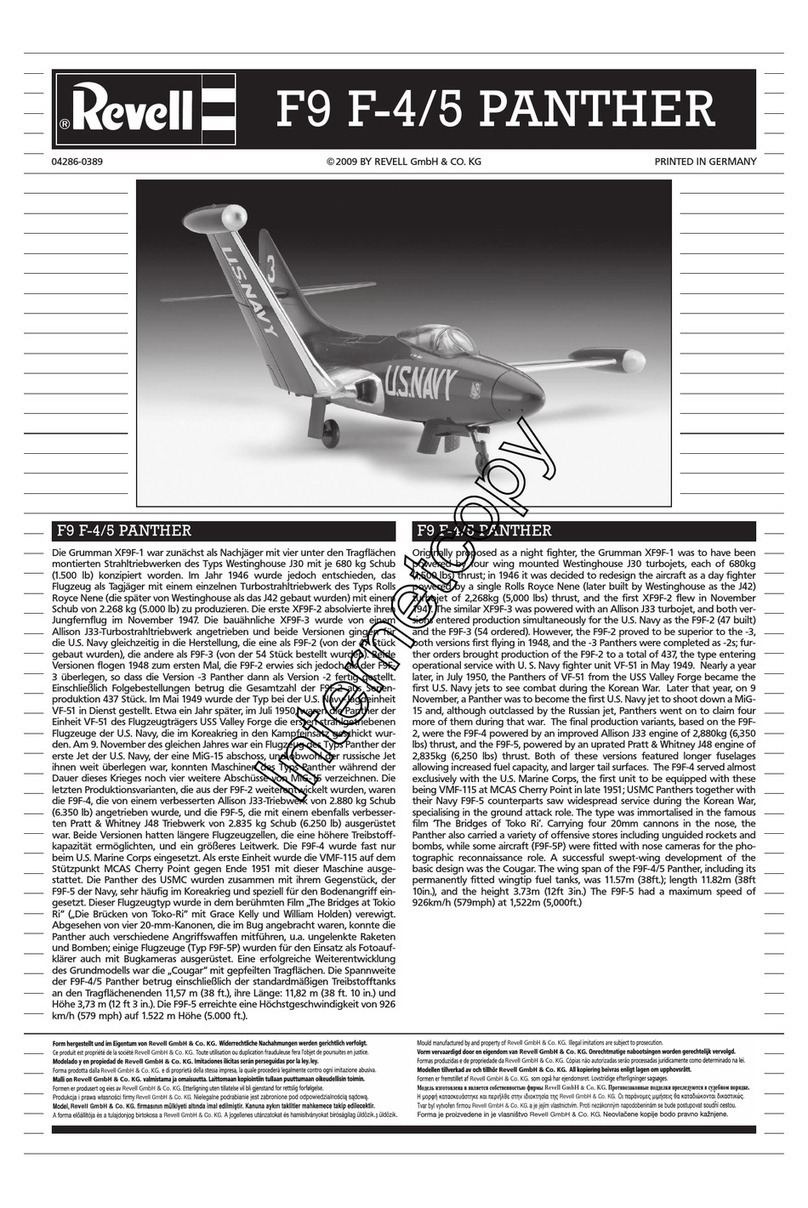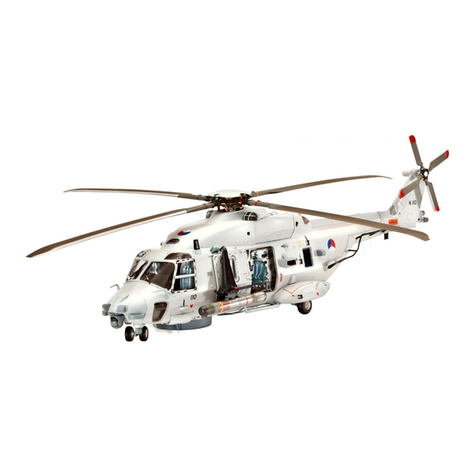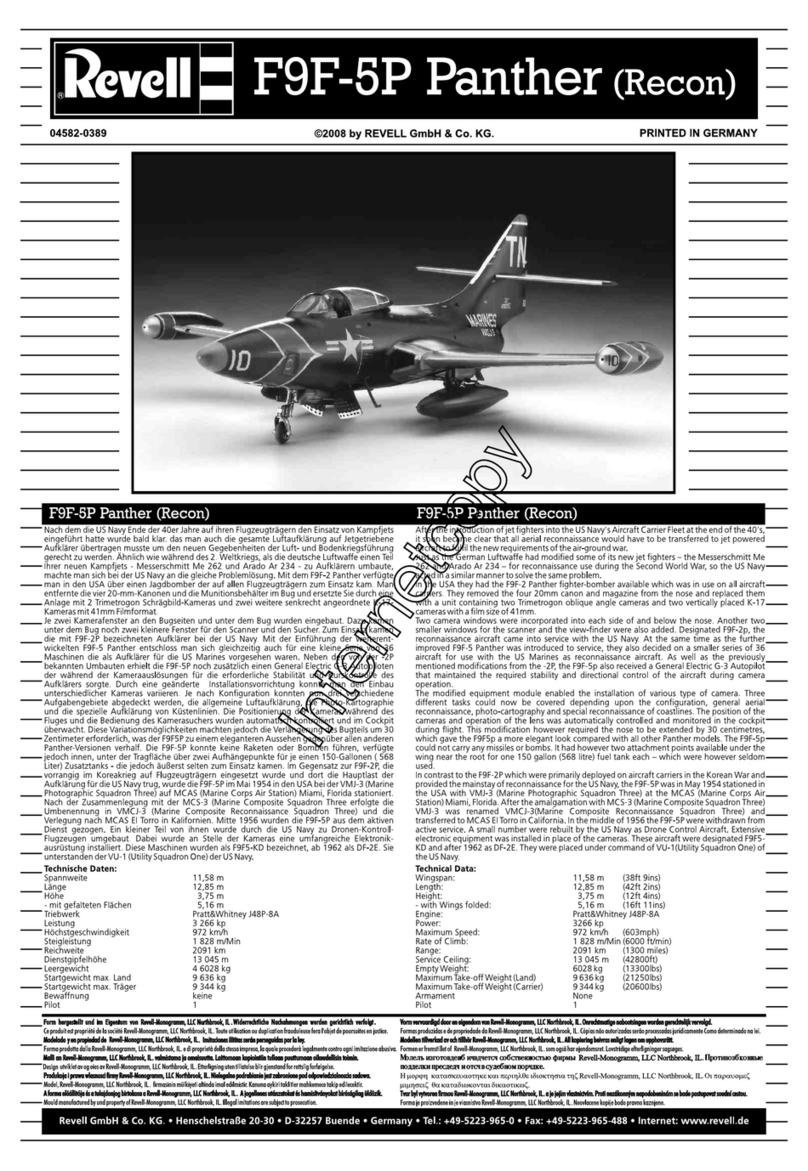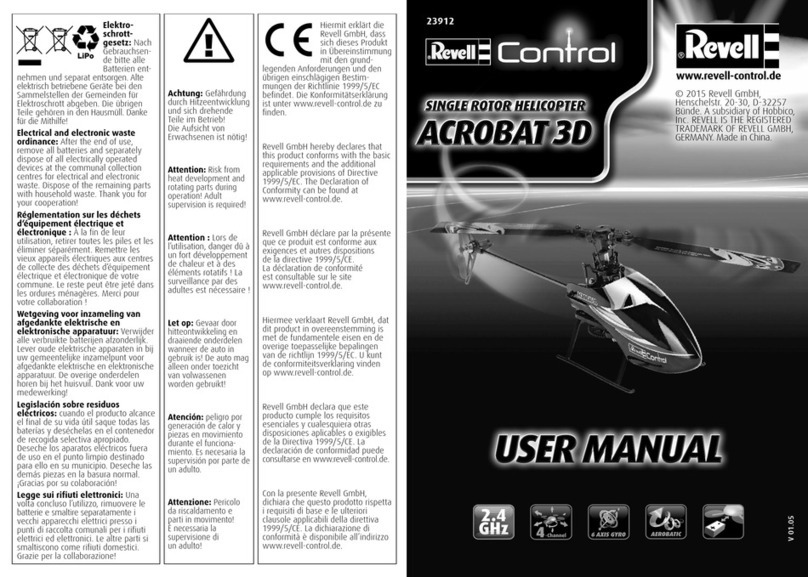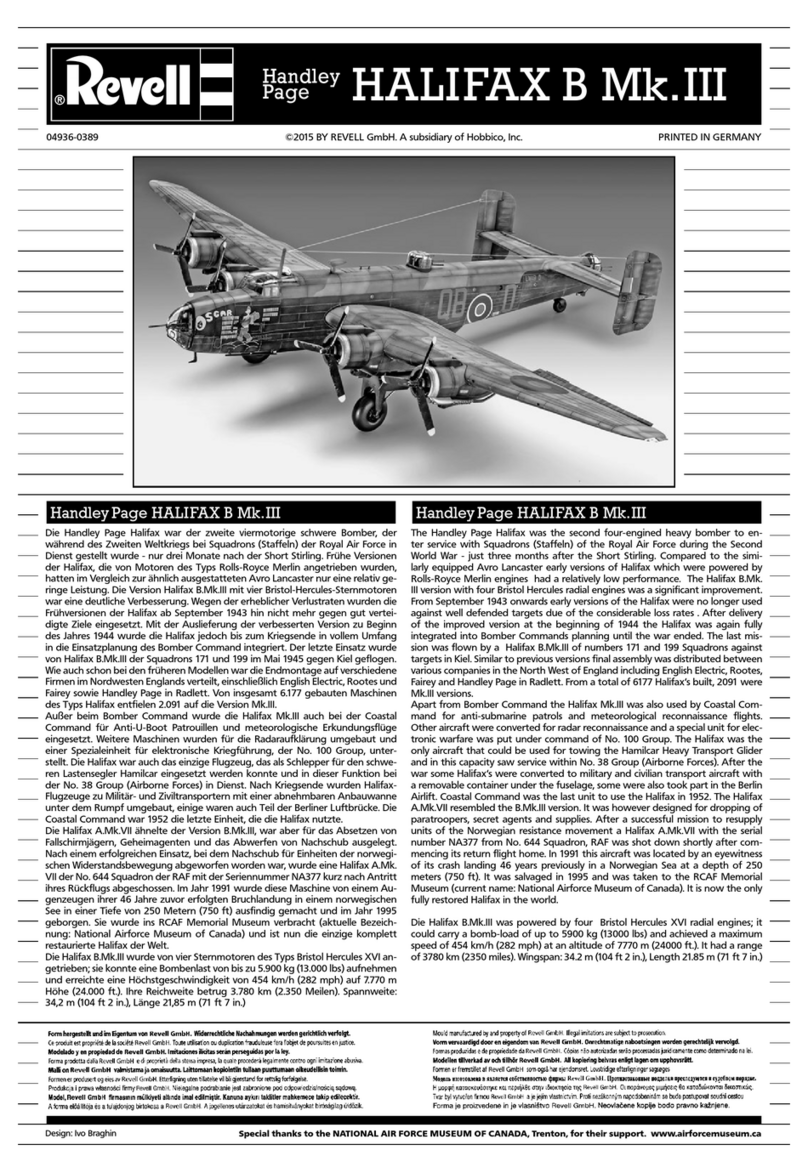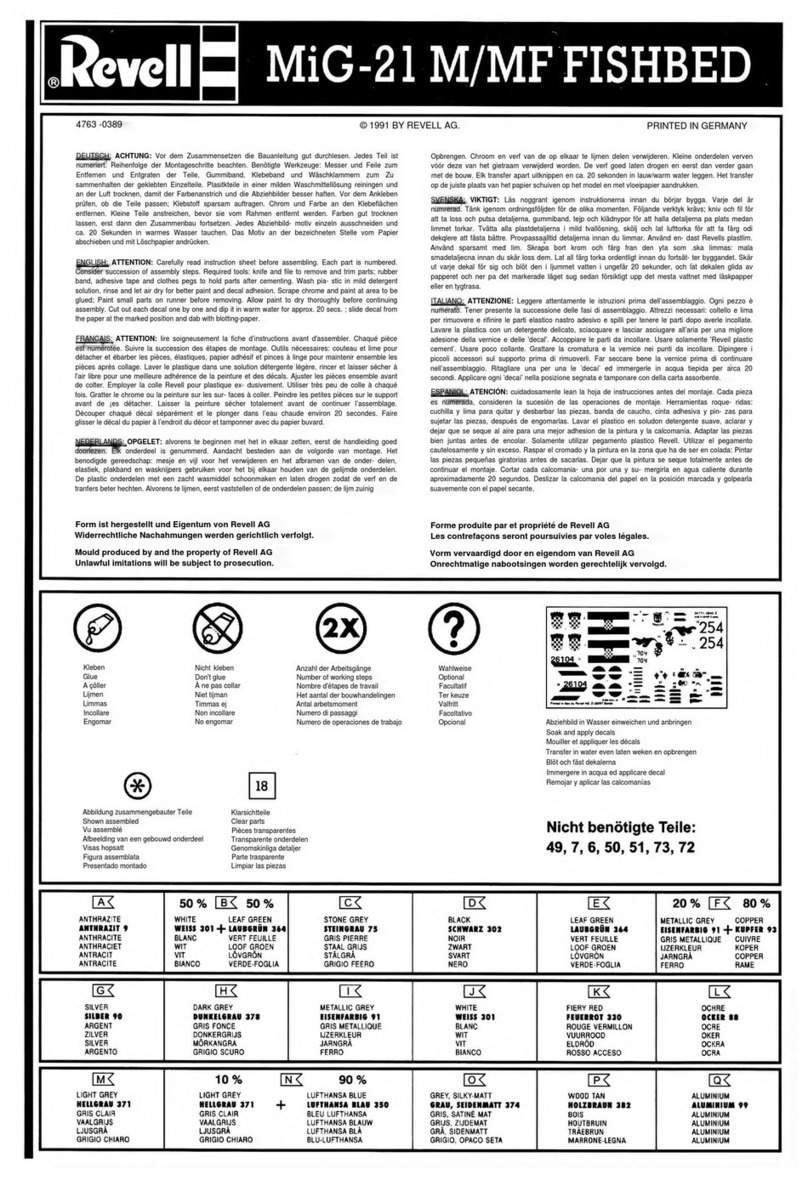
Aluminum
Chrome
Dark Gray FS 36081
Dark Green FS 34092
Dark Gull Gray FS 36231
Flat Black FS 37038
Gray FS 36270
Green
Gloss Black FS 17038
Gloss White FS 17875
Gunmetal
Light Gray FS 36559
Light Green FS 34102
Olive Drab FS 34087
Olive Green FS 34095
Red FS 11136
Satin White
Silver
Steel
Tan
Yellow FS 13538
If you have any questions or comments, call our hotline at: (800) 833-3570
or, please write to:
Revell-Monogram Consumer Service Department, 725 Landwehr Road, Northbrook, Illinois 60062
Be sure to include the plan number ((85552100200), part number, description, your return address and phone number.
Visit our website: www.revell-monogram.com
A-10 WARTHOG
KIT5521 85552100200
* REPEAT SEVERAL TIMES
* A REPETER PLUSIEURS FOIS
* CEMENT TOGETHER
* A COLLER
* ALTERNATIVE ASSEMBLY
* ENSEMBLAGE ALTERNATIVE
* REMOVE AND THROW AWAY
* A RETIRER ET JETER
* DO NOT CEMENT
* NE PAS COLLER
* OPTIONAL PARTS
* PIECES EN OPTION
* DECAL
* DECAL COMANIE
REVELL-MONOGRAM, LLC Northbrook, IL. Copyright © 2003. All rights reserved.
During the war in Vietnam, the Air Force discovered that its
fighter-bombers were not very good at providing close air support
(CAS) to troops on the ground. What was needed was an aircraft
like the attack types used by the U.S. Navy, and to fill this need, the
Air Force first acquired surplus Navy A-1 Skyraiders. Next, the Air
Force developed its own version on the Navy’s proven A-7 Corsair
II, but the Air Force wanted a dedicated attack and close air sup-
port aircraft of its own design. This led to the development of the
A-10 Thunderbolt II, which, because of its ungainly looks, became
commonly known as the Warthog. Designed around a seven-bar-
rel, 30-mm cannon, which fires depleted Uranium rounds capable
of piercing a considerable thickness of armor, the Warthog quickly
became known as a tank buster. Additionally, eleven pylons under
the wings and fuselage can carry a wide variety of ordnance includ-
ing standard bombs, cluster bombs, and guided missiles. But the
A-10 not only has a lot of firepower, its also designed to be very
survivable. The pilot sits in an armored “bathtub” to protect him
from ground fire. The Warthog can fly safely with either one of its
twin tails shot away and the two turbofan engines are mounted
high above the tail to protect them from anti-aircraft artillery. The
tail surfaces also shield the engines from heat seeking mis-
siles. During Operations Desert Storm and Iraqi Freedom, A-10s
were very successful at destroying hundreds of tanks and other
armored vehicles belonging to the Republican Guard and other
units of the Iraqi Army. Quite often Warthogs returned safely to
their base with extensive battle damage that would have downed
other aircraft. Your Revell kit of the A-10 comes with two sets of
markings in different paint schemes. One is from the 104th Tactical
Fighter Squadron on the 175th Tactical Fighter Group which is part
of the Maryland Air National Guard. It is named “NORRIS THE
PLAYHOG” and is painted in the European I scheme. The other
aircraft is named “Lets Roll” and is painted in the two-toned gray
scheme. It was assigned to the 345th Fighter Squadron of the
355th Fighter Wing at Davis-Monthan Air Force Base, Arizona.
Aluminium
Chrome
Gris foncé
Vert foncé
Gris cendré foncé
Noir mat
Gris
Vert
Noir brillant
Blanc brilliant
Bronze
Gris clair
Vert clair
Gris vert
Vert olivet
Rouge
Blanc satiné
Argent
Acier
Havane
Jaune
This optional paint guide is provided if
you choose to detail paint your model.
Ce guide de peinture vous sera fourni si vous choisissez
de peindre votre modèle en détail.
* Study the assembly drawings.
* Each plastic part is identified by a number.
* For better paint and decal adhesion, wash
the plastic parts in a mild detergent solution.
Rinse and let air dry.
* Check the fit of each piece before
cementing in place.
* Use only cement for polystyrene plastic.
* Scrape paint from areas
to be cemented.
* Allow paint to dry thoroughly before
handling parts.
* Any unused parts may be discarded.
DECAL APPLICATION INSTRUCTIONS
1. Cut desired decal from sheet.
2. Dip decal in water for a few seconds.
3. Place wet decal on paper towel.
4. Wait until decal is movable on paper backing.
5. Place decal in position on model, face up and
slide backing away.
6. Press out air bubbles with a soft damp cloth.
7. Milkiness that may appear is for better decal
adhesion and will dry clear. Wipe away any
excess adhesive.
8. Do not touch decal until fully dry.
9. Allow the decals 48 hours to dry before
applying clear coat.
NOTE: Decals are compatible with
setting solutions or solvents.
READ THIS BEFORE YOU BEGIN LIRE CE QUI SUIT AVANT DE COMMENCER
* Etudier les schémas de montage.
* Chaque pièce en plastique est identifiée par un numéro.
* Pour une meilleure prise de la peinture et des autocollants,
laver les pièces en plastique avec une solution détergente
peu concentrée. Les rincer et les laisser sécher à l'air.
* Vérifier que chaque pièce s'ajuste bien avant
de la coller en place.
* N'utiliser que de la colle pour polystyrène.
* Gratter les parties à coller pour enlever la peinture.
* Laisser la peinture bien sécher avant de manipuler les pièces.
* Toute pièce inutilisée peut être jetée.
DIRECTIVES D'APPLICATION DES AUTOCOLLANTS
1. Découper l'autocollant désiré de la feuille.
2. Tremper l'autocollant dans de l'eau pendant quelques secondes.
3. Placer l'autocollant mouillé sur une serviette en papier.
4. Attendez que l'autocollant puisse être déplacé sur son support
en papier.
5. Mettre l'autocollant en position sur le modèle face sur
le dessus et faire glisser le support pour l'enlever.
6. Appuyer avec un chiffon doux humide pour éliminer les bulles d'air.
7. La substance laiteuse qui peut apparaître est destinée à
améliorer l'adhésion de l'autocollant et devient incolore au
séchage. Essuyer pour enlever tout excédent d'adhésif.
8. Ne pas toucher l'autocollant tant qu'il n'est pas bien sec.
9. Laisser l'autocollant sécher pendant 48 heures avant
d'appliquer une couche transparente.
REMARQUE: Les autocollants sont compatibles avec
les solutions de fixage ou les solvants.
